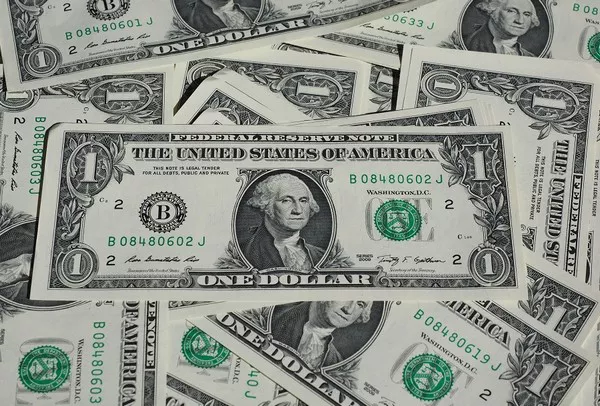In a significant turn of events, hedge funds are recalibrating their stance on the U.S. dollar amid rising expectations of rate cuts next year. This adjustment, revealed in the latest data from the Commodity Futures Trading Commission (CFTC), indicates a potential weakening of a crucial support pillar for the currency in the upcoming months.
According to CFTC’s recent report, hedge funds reduced their net long dollar position against major and emerging currencies to $4.5 billion in the week ending Nov. 14, down from $10 billion the previous week. This $5.5 billion week-on-week swing is the most substantial since July and the second-largest observed this year. The shift coincides with heightened anticipation in interest rate futures markets, where projections now include up to 100 basis points of Federal Reserve rate cuts by the end of the coming year.
While this dovish sentiment has seen some recent moderation, traders remain steadfast in their predictions of substantial easing in the latter half of next year, potentially impacting the dollar’s strength. Whether this slowdown in dollar-buying by hedge funds is a momentary pause or indicative of a more sustained trend hinges on the Federal Reserve’s future decisions.
JP Morgan’s currency strategy team, in their 2024 outlook, emphasized that significant weakness in the U.S. dollar necessitates Federal Reserve rate cuts and improved growth outside the U.S., conditions that are not yet met.
The considerable shift revealed by the CFTC data contrasts with the scenario just a week prior, where funds held a $10 billion net long dollar position, the most bullish bet on the greenback since October last year. This marked a substantial turnaround from a net short position exceeding $20 billion in mid-July. The optimism at that time hinted at the formation of a base for another prolonged dollar upswing, correlating with a 7% rise in the dollar index. However, November has witnessed a 3% slide in the dollar, potentially marking its worst month in a year.
The historical context of CFTC funds’ net dollar positions, which have traditionally been long-term directional trades held for at least a year, raises questions about the current situation. Unlike the past decade’s trends, funds have only maintained a net long dollar position for nine weeks, suggesting a departure from the usual narrative.
In the week ending Nov. 14, the most prominent shifts were observed against the euro and Japanese yen. Hedge funds expanded their net long euro position by $2.9 billion, the most substantial increase since July, bringing the total position to nearly $18 billion. Meanwhile, the net short yen position was cut by $2 billion, essentially reversing the prior week’s move that had pushed it to the largest net short yen position in six years.
While positioning remains stretched, signaling potential risks, the Bank of Japan’s indications about ending negative interest rates could lead to a significant upside for the yen. Currently hovering near multi-decade lows against major currencies, the yen’s fortunes could change, posing challenges for the dollar in the global currency landscape.
Morgan Stanley’s FX strategy team, in their 2024 outlook, highlighted the yen as the exception to the widespread U.S. dollar strength, predicting a fall in USD/JPY to 142 by mid-2024. As the dynamics of global currency markets evolve, the recent shifts in hedge fund sentiment underscore the complexities and uncertainties ahead for the U.S. dollar.


